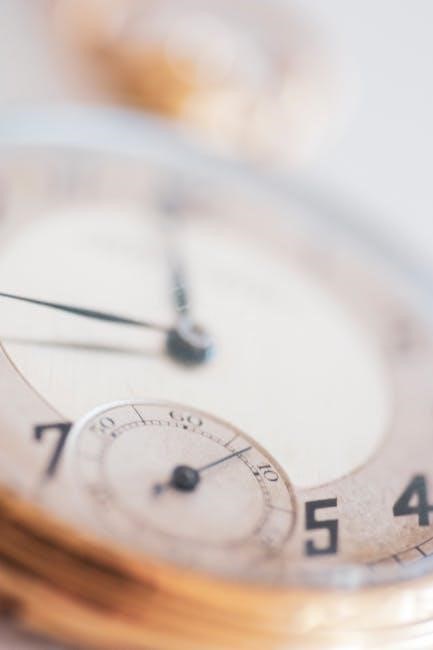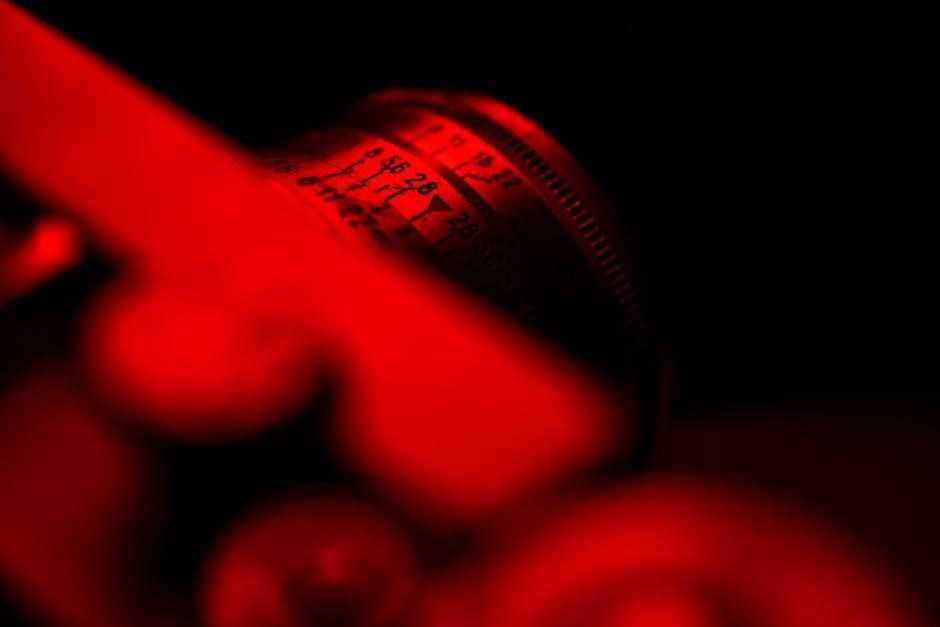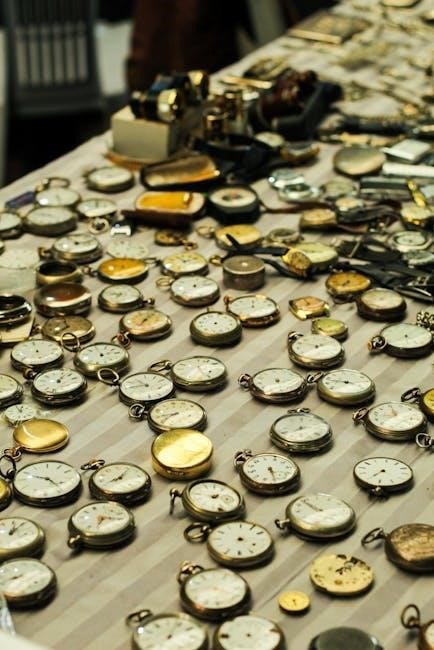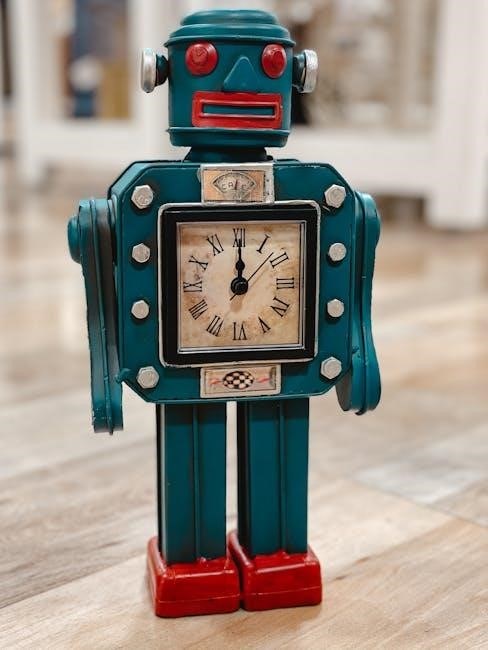Overview of 24-Hour Urine Collection
The 24-hour urine collection measures kidney function by analyzing urine over a full day․ It involves collecting all urine in a special container kept cool to ensure accuracy․ This test helps diagnose conditions like kidney disease and monitor protein levels‚ especially in pregnant women with suspected pre-eclampsia․ Proper collection is crucial for reliable results․
1․1 Purpose of the Test
The primary purpose of a 24-hour urine collection is to assess kidney function by measuring various components in urine over a full day․ This test helps diagnose kidney disease‚ monitor conditions like proteinuria‚ and evaluate the effectiveness of treatments․ It is particularly useful for detecting abnormalities such as excessive protein or glucose in the urine‚ which may indicate underlying health issues․ For pregnant women‚ it is often used to monitor protein levels and detect pre-eclampsia․ Accurate results from this test guide healthcare providers in making informed decisions about patient care and treatment plans․
1․2 Importance of Accurate Collection
Accurate 24-hour urine collection is critical for obtaining reliable test results․ Any errors‚ such as missing samples or improper storage‚ can lead to incorrect measurements of key components like protein‚ glucose‚ or electrolytes․ This could result in misdiagnosis or inappropriate treatment․ Precise collection ensures that healthcare providers can assess kidney function accurately and monitor conditions effectively․ Adhering to the collection protocol‚ including using the correct container and maintaining the sample at the right temperature‚ is essential for valid results and effective patient care․ Inaccuracies may necessitate repeating the test‚ causing delays in diagnosis and treatment․

Preparation for the 24-Hour Urine Collection
Prepare by gathering a special container‚ labeling it with your name and date‚ and ensuring it is clean․ Begin by emptying your bladder in the morning‚ then collect all urine for the next 24 hours‚ storing the container in a cool place․ Avoid contaminants and follow instructions carefully to ensure accurate results․
2․1 Materials Needed
To prepare for a 24-hour urine collection‚ you will need a few essential materials․ These include a large‚ clean‚ and sterile plastic container specifically designed for urine collection‚ which your healthcare provider will typically supply․ The container should have a tight-fitting lid to prevent leakage and contamination․ You may also need labels to mark your name‚ the start date‚ and the collection period․ Additionally‚ it is important to have access to a cooler with ice packs to store the urine during the collection period‚ especially if you are away from home․ Ensure all materials are ready before starting the collection process to avoid delays or errors․

2․2 Pre-Collection Instructions
Before starting the 24-hour urine collection‚ ensure you understand the process and follow all guidelines․ Begin the collection with an empty bladder‚ discarding the first urination․ Note the exact start time and date․ Avoid consuming foods or medications that could interfere with test results unless instructed otherwise․ Label the collection container with your name‚ start date‚ and any other required information․ Keep the container easily accessible to avoid missing any urinations․ Ensure the container is clean and free from contaminants before use․ If you are unsure about any step‚ consult your healthcare provider for clarification․ Proper preparation ensures accurate and reliable test results․ Stay hydrated and adhere to the instructions provided․
2․3 Starting the Collection
To begin the 24-hour urine collection‚ start with an empty bladder by urinating and discarding the sample․ Note the exact start time and date․ Collect every urination over the next 24 hours in the provided container․ Ensure the container is properly labeled and kept cool‚ either in the refrigerator or on ice‚ to preserve the sample․ Avoid adding anything to the container‚ such as toilet paper or wipes‚ as this could contaminate the sample․ If you miss a urination‚ note the time and inform your healthcare provider․ Timely and accurate collection is critical for reliable test results․ Follow all instructions carefully to ensure the process is completed correctly․

The Collection Process
The collection process involves gathering all urine produced over 24 hours in a specialized container․ Maintain the sample’s integrity by following proper hygiene and storage guidelines provided․
3․1 Proper Technique for Urine Collection
Proper technique ensures accurate test results․ Begin by emptying your bladder completely in the morning to start the 24-hour cycle․ Collect every urine sample‚ including the final one at the end of the 24 hours․ Use the provided container with a tight-fitting lid to prevent spills․ Avoid contaminating the sample by not touching the inside of the container or lid․ If using a preservative‚ follow the instructions carefully․ Label the container with your name‚ date‚ and time of collection․ Store the container in a cool‚ dark place during the collection period to maintain sample integrity․
3․2 Handling the Collection Container
Handle the collection container carefully to maintain sterility and prevent contamination․ Keep the container clean and dry before use․ Store it in a cool‚ dry place when not in use․ Always close the lid tightly to avoid exposure to dust or bacteria․ Label the container with your name‚ collection start date‚ and time for easy identification․ Inspect the container for any cracks or damage before use․ During transport‚ carry it securely to prevent spills․ Avoid refrigerating the container unless instructed‚ as some tests require specific storage conditions․ Ensure the container remains with you throughout the 24-hour period for consistent collection․
3․4 Completing the 24-Hour Period
Complete the 24-hour urine collection by urinating one last time at the exact time the collection period ends․ Ensure this final sample is added to the container to capture the full 24-hour cycle; After the last urination‚ tightly seal the container and label it with your name‚ the date‚ and the time of completion․ Store the container in a cool‚ dry place until it is transported to the lab․ Avoid delays in submitting the sample to prevent degradation of the urine․ Inform your healthcare provider once the collection is complete․ Proper completion ensures accurate test results for diagnosis or monitoring․

Post-Collection Procedures
Store the urine sample in a cool‚ dry place after collection․ Transport it promptly to the lab to avoid sample degradation․ Ensure safe handling during transit․

4․1 Storing the Urine Sample
Proper storage of the 24-hour urine sample is crucial to maintain its integrity for accurate test results․ Store the sample in a cool‚ dark place‚ ideally between 2-8°C (36-46°F)‚ to prevent degradation․ Avoid freezing‚ as it may alter certain components․ Keep the container away from direct sunlight and heat sources․ If the collection period ends at night‚ refrigerate the sample until transport․ Ensure the container is tightly sealed to prevent leakage or contamination․ Label the container clearly with your name‚ collection start and end times‚ and date․ Adhere to specific storage instructions provided by your healthcare provider or lab․ Proper storage ensures reliable test outcomes․
4․2 Transporting the Sample to the Lab
After completing the 24-hour collection‚ transport the urine sample to the lab promptly․ Use a sealed‚ leak-proof container to prevent spills during transit․ If refrigerated during storage‚ keep it cool using an insulated bag with ice packs to maintain the temperature․ Avoid exposing the sample to extreme heat or direct sunlight․ Deliver the sample within the same day‚ preferably within a few hours of collection․ Inform lab staff of the sample’s arrival to ensure timely processing․ Proper transportation preserves sample integrity and ensures accurate test results․ Handle the container carefully to avoid any damage or contamination during transport․

Interpretation of Results
Lab analysis measures parameters like protein‚ creatinine‚ electrolytes‚ and pH to assess kidney function․ Abnormal results may indicate conditions such as kidney disease or metabolic disorders․
5․1 Understanding Urine Test Parameters
Urine test parameters in a 24-hour collection include protein‚ creatinine‚ electrolytes‚ pH‚ and other compounds․ Protein levels help diagnose kidney damage‚ while creatinine measures kidney function․ Electrolytes like sodium and potassium assess reabsorption and excretion․ pH indicates urinary acidity‚ which can reflect metabolic conditions․ Other parameters may include urea‚ calcium‚ or hormones‚ depending on the test․ These measurements are compared to normal ranges‚ which vary by age‚ gender‚ and health status․ Abnormal values may suggest kidney disease‚ metabolic disorders‚ or hormonal imbalances․ Accurate interpretation requires considering individual factors and discussing results with a healthcare provider․
5․2 Common Abnormal Findings
Common abnormal findings in 24-hour urine tests include elevated protein levels‚ indicating kidney damage or disease․ High creatinine clearance may suggest kidney dysfunction‚ while low levels could point to impaired renal function․ Excessive electrolytes‚ such as sodium or potassium‚ may indicate imbalances or hormonal issues․ Abnormal pH levels could suggest urinary tract infections or metabolic disorders․ High urea levels might reflect dehydration or liver dysfunction․ Elevated calcium or oxalate levels could indicate kidney stone risk․ These findings require further investigation‚ such as blood tests or imaging‚ to confirm diagnoses․ Consulting a healthcare provider is essential to interpret results accurately and determine next steps․

Special Considerations
Special considerations include challenges in pediatric and geriatric populations‚ where collection may require additional assistance․ Pregnant women or individuals with mobility issues need tailored instructions for accurate results․
6․1 Collection in Special Populations
Collection in special populations‚ such as pediatric‚ geriatric‚ or pregnant patients‚ requires extra attention․ For children‚ pediatric urine collection bags may be used‚ ensuring proper adhesion and comfort․ Geriatric patients may need assistance with the process due to mobility or dexterity issues․ Pregnant women should be advised on handling the collection without compromising hygiene or comfort․ Additionally‚ individuals with neurological disorders or incontinence may require specialized collection devices․ Healthcare providers should provide tailored instructions and support to ensure accurate results and patient comfort in these groups․
6․2 Handling Emergencies During Collection
During the 24-hour urine collection‚ emergencies such as spills or inability to collect urine may arise․ If a spill occurs‚ clean the area immediately and use a backup container if available․ For patients unable to collect urine‚ consult a healthcare provider for alternative methods; In cases of contamination or incomplete collection‚ inform the lab to assess sample viability․ If a medical emergency occurs‚ prioritize patient safety and seek immediate assistance․ Proper handling of emergencies ensures the integrity of the collection process and patient well-being․ Always follow healthcare guidelines for managing unexpected issues during the 24-hour period․
Importance of Patient Compliance
Patient compliance ensures accurate test results by adhering to collection instructions․ Proper timing‚ avoiding contaminants‚ and completing the 24-hour period are crucial for reliable data and diagnosis․
7․1 Consequences of Incomplete Collection
Incomplete urine collection can lead to inaccurate test results‚ potentially causing misdiagnosis or inappropriate treatment․ Missing samples may result in delayed diagnosis‚ requiring the test to be repeated․ This inconvenience can prolong patient anxiety and disrupt clinical workflows․ Additionally‚ incomplete samples may lead to incorrect interpretations of conditions like kidney function or hormone levels․ Repeating the test also increases healthcare costs․ Therefore‚ ensuring the full 24-hour collection is critical to obtaining reliable data and avoiding unnecessary delays or financial burdens․
7․2 Tips for Ensuring Compliance
To ensure compliance‚ provide clear instructions and emphasize the importance of completing the 24-hour collection․ Use a collection container that is convenient and easy to carry․ Remind patients to collect all urine samples‚ including the final one at the end of the 24-hour period․ Encourage them to keep the container accessible and to store it properly․ Offer a backup container in case of spills or emergencies․ Educate patients on the significance of compliance to avoid test repetition․ Provide written instructions and a collection log to track progress․ Address any concerns promptly to ensure adherence and accurate results․
Common Mistakes to Avoid
Common mistakes include forgetting to collect all urine samples‚ improper storage‚ and not completing the full 24-hour collection period‚ which can lead to inaccurate test results․
8․1 Forgetting to Collect All Samples
Forgetting to collect all urine samples is a common mistake that can significantly affect test accuracy․ Every void must be collected‚ including the first sample after starting the collection․ Missing even one sample can lead to incomplete data‚ making it difficult for healthcare providers to assess conditions like kidney function or hormone levels accurately․ Patients should be reminded to store the container in an accessible location and set reminders to ensure no samples are missed․ Clear instructions and checklists can help prevent this error‚ ensuring reliable results for proper diagnosis and treatment․ Consistency is key to a successful collection process․
8․2 Improper Storage of the Sample
Improper storage of the 24-hour urine sample can compromise test results․ The sample should be stored in a refrigerator at a temperature between 2°C and 8°C to prevent bacterial growth and chemical degradation․ Avoid freezing‚ as it may alter the composition of the urine․ If refrigeration is unavailable‚ keep the sample in a cool‚ dark place and use ice packs․ Never add preservatives unless instructed by a healthcare provider․ Improper storage can lead to inaccurate measurements of substances like protein‚ glucose‚ or hormones․ Always return the sample to the lab within 24 hours to ensure reliable results․

Troubleshooting During Collection
Troubleshooting during 24-hour urine collection involves identifying common issues like spilled samples or missed collections․ Use absorbent materials for spills and document any missed samples immediately to ensure accuracy․
9․1 Dealing with Spilled Samples
If a urine sample spills‚ act quickly to minimize loss․ Use absorbent materials to contain the spill and transfer any recoverable urine back to the collection container․ If the spill results in a significant loss‚ inform the patient and assess whether starting over is necessary․ Document the incident‚ including the volume lost and any steps taken․ If the collection is incomplete‚ notify the lab to determine if the sample is still usable․ Reassure the patient and provide guidance to avoid future spills‚ ensuring the integrity of the collection process is maintained for accurate test results․
9․2 Addressing Patient Concerns
Patient concerns during the 24-hour urine collection must be addressed promptly to ensure compliance․ Common issues include discomfort‚ embarrassment‚ or confusion about the process․ Reassure the patient by explaining the importance of the test and its role in accurate diagnosis․ Provide clear‚ concise instructions and demonstrate the collection technique if needed․ Emphasize the need to collect all urine during the 24-hour period and address any fears about contamination or privacy․ Encourage patients to ask questions and seek assistance if difficulties arise․ This support helps maintain patient cooperation and ensures a successful collection process․

The 24-hour urine collection is crucial for accurate diagnosis․ Adhering to instructions ensures reliable results‚ aiding in effective treatment plans․ Patient cooperation is key․
10․1 Summary of Key Points
A 24-hour urine collection is a diagnostic tool to assess various bodily functions․ It requires precise instructions to ensure accuracy and reliability․ Key steps include proper preparation‚ using the correct materials‚ and maintaining hygiene․ Timely storage and transportation are crucial to prevent sample degradation․ Patient compliance is vital to obtain valid results‚ as incomplete collections can lead to inaccurate diagnoses․ Understanding the process and adhering to guidelines helps in achieving reliable outcomes․ This method aids healthcare providers in making informed decisions for targeted treatments․ Proper execution ensures the test’s effectiveness in evaluating health conditions․
10․2 Final Tips for Successful Collection
To ensure a successful 24-hour urine collection‚ start the process in the morning and use the provided container․ Label the container with your name‚ date‚ and time․ Avoid missing any voidings‚ as this can affect results․ Keep the container refrigerated or in a cool place during collection․ Use a timer or reminder to stay on track․ Double-check that all urine is collected‚ including the final void at the end of the 24-hour period․ Return the sample promptly to the lab to avoid delays․ Following these steps ensures accurate test results and helps your healthcare provider make informed decisions․
